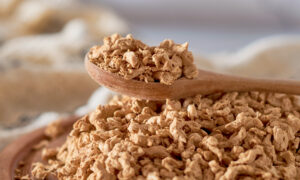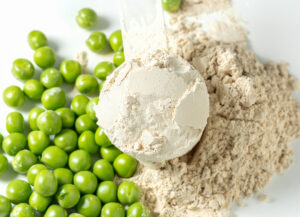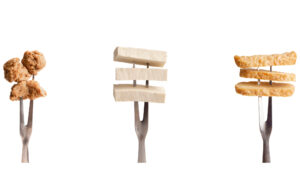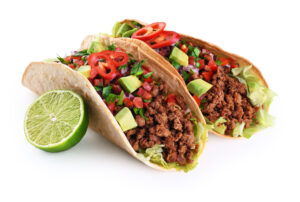Textured Vegetable Protein


Textured Vegetable Protein is a meat substitute product made from plants. It can be made from a variety of crops including soybeans, wheat, faba beans, cottonseed, peas, oats and rapeseed/canola. The most common source plant for TVP is soybean. Textured vegetable protein can be made from almost any high protein crop. At MSG we do not process wheat because our plant facilities are gluten free.


There are two main types of Textured Vegetable Protein, high- moisture (HM) and low-moisture (LM). When processing, both high and low-moisture TVPs’ have the fat and fibrous plant material stripped away leaving a high protein paste. This paste is passed through a heated nozzle under pressure, which creates meat-like strands. In this form, the TVP is high-moisture. Depending on the final application, the processing plant will use an appropriate nozzle for the Textured Vegetable Protein. For fine powders or flour consistency’s the TVP will pass through another grinding machine to process it to the desired consistency, this would be categorized as low- moisture TVP.
Different kinds of Textured Vegetable Protein’s have different flavor profiles. Textured Soy Protein (TSP) from soybeans is better suited for bold flavored foods such as hearty soup, chilis or meat patties. Soybeans tend to have more of an earthy flavor profile that will carry over in to the end product. Oat Textured Vegetable Protein can be used in applications such as as flour to boost protein content with a very mild flavor profile. Textured Pea Protein (TPP) from peas has a more earthy flavor profile compared to Oat TVP but more mild flavor than TSP.


Low-moitsture TVP can come in a fine powder like flour or fine sand. In this form it can be mixed with wheat flours to boost protein content, thicken liquids and the enhance texture. Larger granules can be used in dishes like couscous, soups, chilis, hamburger patties, and in meaty sauces as a meat extender or replacement in applications where ground beef would be used. Larger shapes may serve as meat pieces in a dish such as a stir fry, stew, curry, as nuggets or meatballs. Although not common in grocery stores, large ‘logs’ of TVP have been molded and sliced like deli meat to replace common delis like turkey, ham, bologna or salami, and roast beef. These ‘logs’ vary in size. There have been variations of High-moisture TVP used to imitate sausage links, hot dogs, and pepperoni.